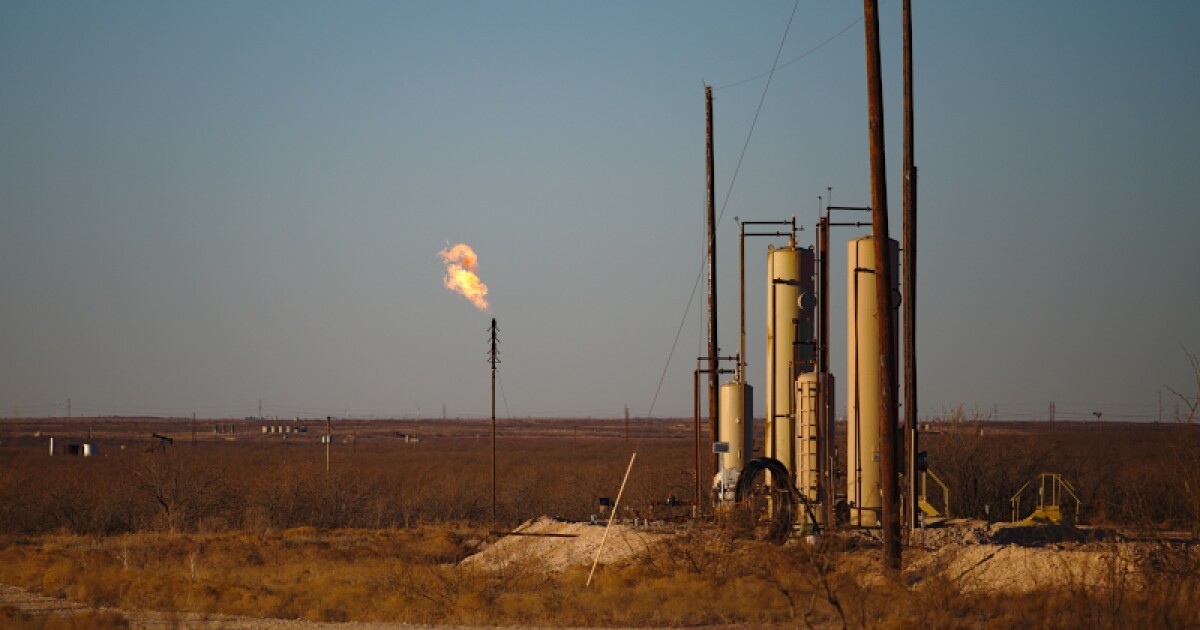For the better part of the past decade, takeaway capacity has failed to keep pace with the Permian Basin’s rapidly expanding associated gas production, leading regional prices to trade at a persistently sharp discount to Henry Hub as they frequently dive into negative territory.
But that dynamic may flip in the second half of 2026, and beleaguered producers are banking on much-needed relief.
East Daley Analytics Senior Director Jack Weixel told Energy Intelligence a shift how both end-users and producers approach contracting has the market less concerned about an apparent overbuild in takeaway capacity.
“Utilities and data centers will use the firm transport that they’ve signed up for, so pipelines … with large utility commitments will fill,” he said. “Producers, on the other hand, have grown tired of negative basis at Waha.”
East Daley believes producers are making a bet that stronger Waha prices will offset the reservation rate cost they have committed to on various pipes.
“How do you stabilize Waha prices? Well, in this instance, you overbuild so the market is no longer constrained,” he explained.
East Daley forecasts 9.1 billion cubic feet per day of incremental takeaway capacity from the Permian will enter service through the end of 2030. Over the same period, they predict the region’s associated gas production will grow by 6 Bcf/d, leading to a 3.1 Bcf/d overbuild.
Crude oil takeaway constraints are likely to curb associated gas production growth well before producers can fill those pipelines, according to Weixel.
“You’d run out of crude oil egress capacity at about 8 Bcf/d [of associated gas production growth],” he said. “Even if you wanted to fill all that incremental gas capacity, you wouldn’t be able to move the crude out of the basin.”
Short-Term Pain, Long-Term Gain
Amid a dearth of takeaway capacity, Tudor, Pickering, Holt & Co. analysts noted that some producers choked back production after western Texas gas prices reached record lows last week. Even so, they expect producers will have to grind through a period of weak pricing in the short term.
“Our conversations point to shut-ins occurring in gassy areas of the Permian given the lack of egress, and this may, in part, be causing the recent rebound in price,” they said in a report this week.
For flow Oct. 3, Energy Intelligence’s Waha Hub index printed a record low of minus $9.50 per million Btu. Prices for flow over the Oct. 4-6 weekend improved $1.25 to minus $6.71/MMBtu before recovering $4.80 the following day to minus $1.91/MMBtu.
“Although maintenance is likely behind the significant dive in pricing, our egress model shows all of [the fourth quarter] to be tight, likely causing Waha to stay at or below $0/MMBtu,” the analysts wrote. “We would expect the tight market to continue into the second half of 2026, when we expect the [Gulf Coast Express] expansion, Hugh Brinson and Blackcomb to start service.”
Pipeline capacity added in 2027-29 will “add to that cushion,” Weixel predicted, leading to a forward Waha basis “which we forecast will narrow to at least under 50¢” throughout those years.
That’s considerably narrower versus the average discount to Henry Hub of $2.20/MMBtu that Waha has traded at year-to-date through September.
Relief on the Horizon
Kinder Morgan expects the $455 million, 570 million cubic foot per day expansion of Gulf Coast Express, which now ferries 2.57 Bcf/d of Permian Production to southern Texas markets, to enter service in mid-2026.
Meanwhile, Energy Transfer plans to complete the $2.7 billion first phase of its 400 mile, 42 inch Hugh Brinson Pipeline by the end of 2026, which will move 1.5 Bcf/d of gas from the Waha Hub to Maypearl, Texas, south of the Dallas-Forth Worth area. There, it will connect with Energy Transfer’s pipeline and storage infrastructure that provide access to Carthage, Houston Ship Channel, Katy and Agua Dulce.
The second phase will expand capacity to 2.2 Bcf/d and could be built concurrently with Phase 1, “depending on shipper demand,” Energy Transfer said.
And the WhiteWater Midstream-led Blackcomb Pipeline is expected to enter service in the second half of 2026. The 365 mile, 42 inch diameter line will move 2.5 Bcf/d of gas to the Agua Dulce area in southern Texas.

